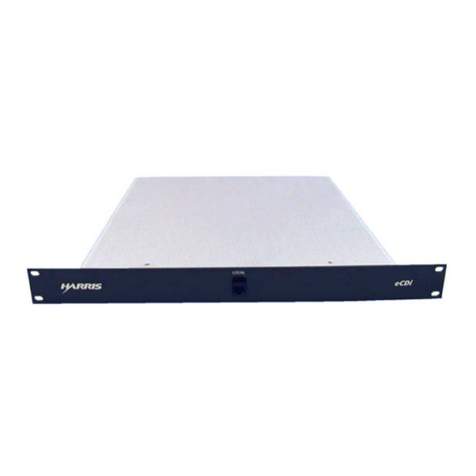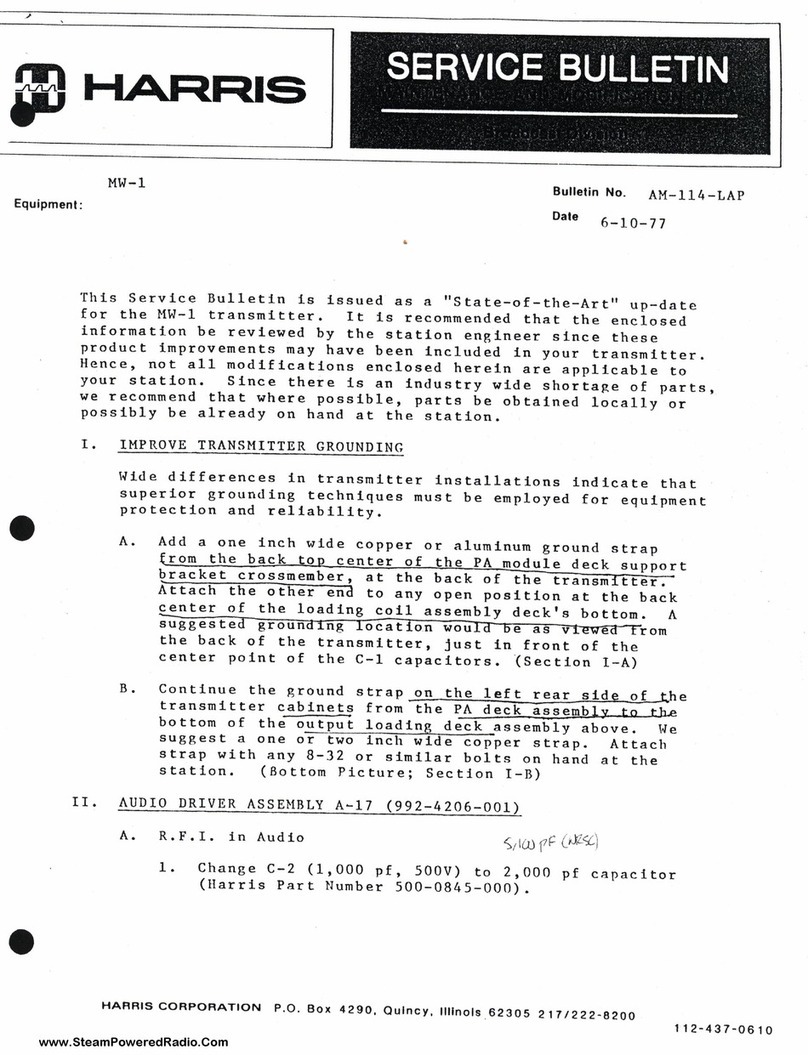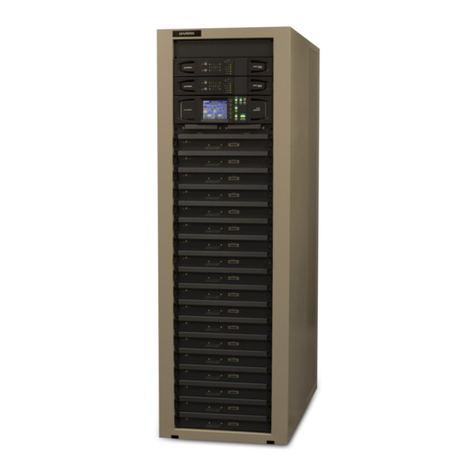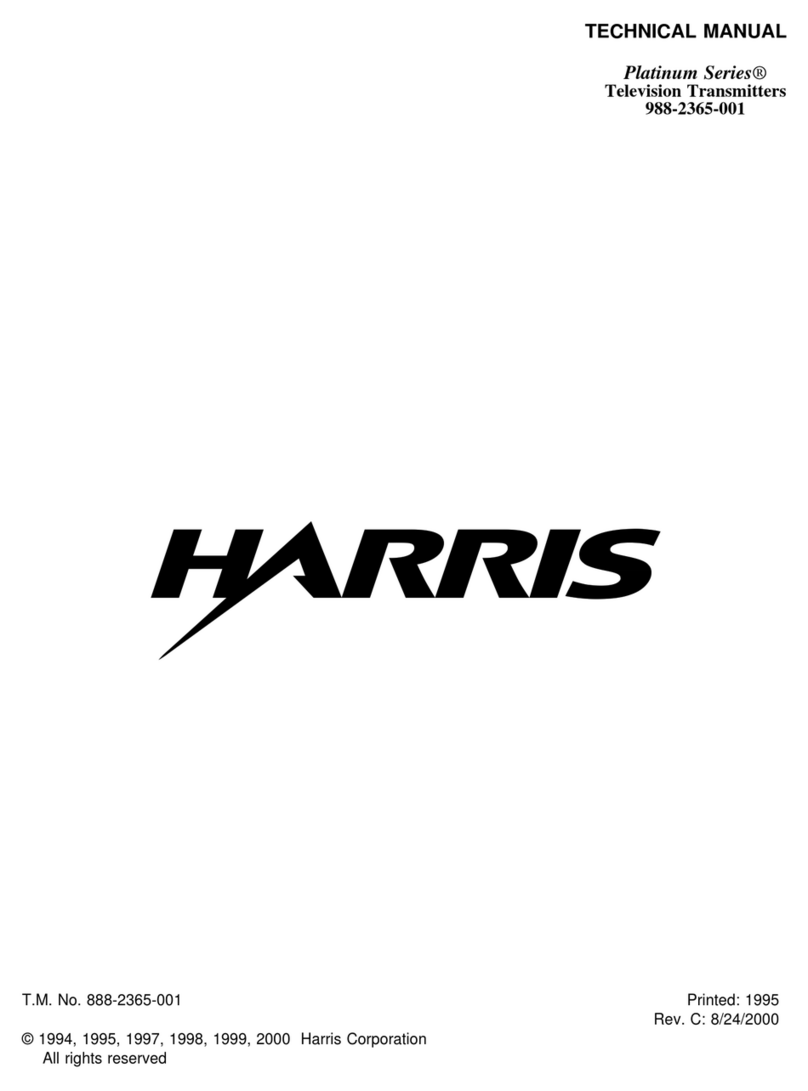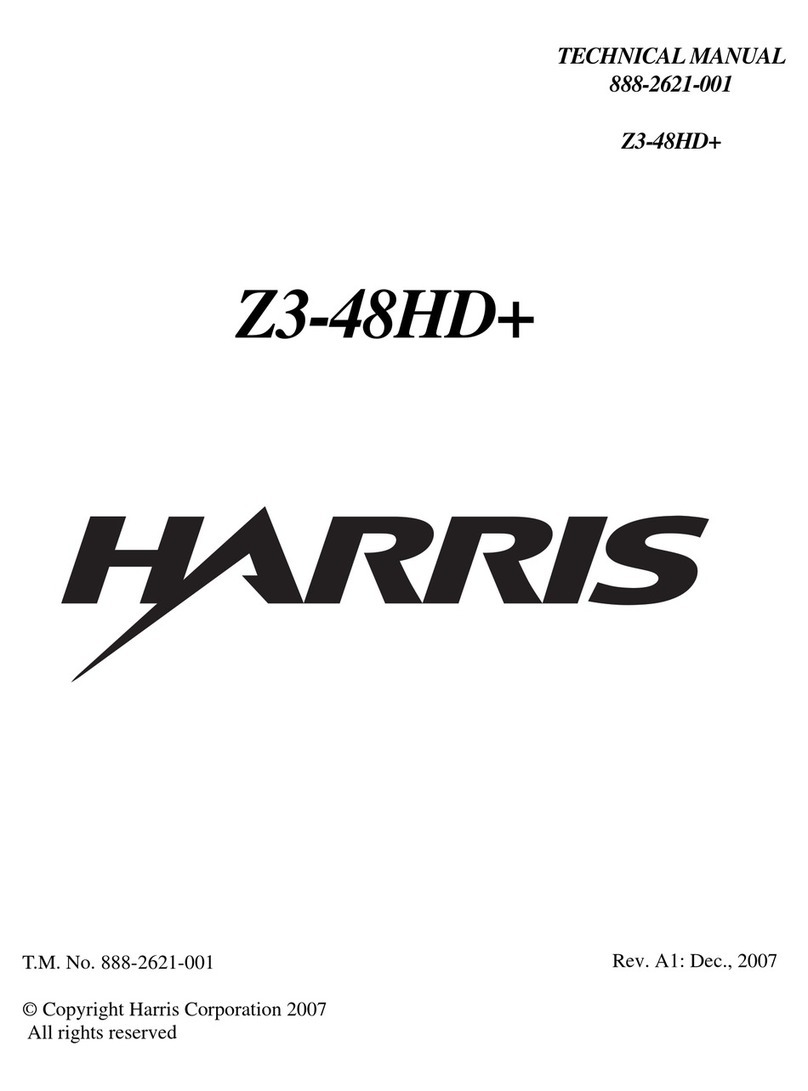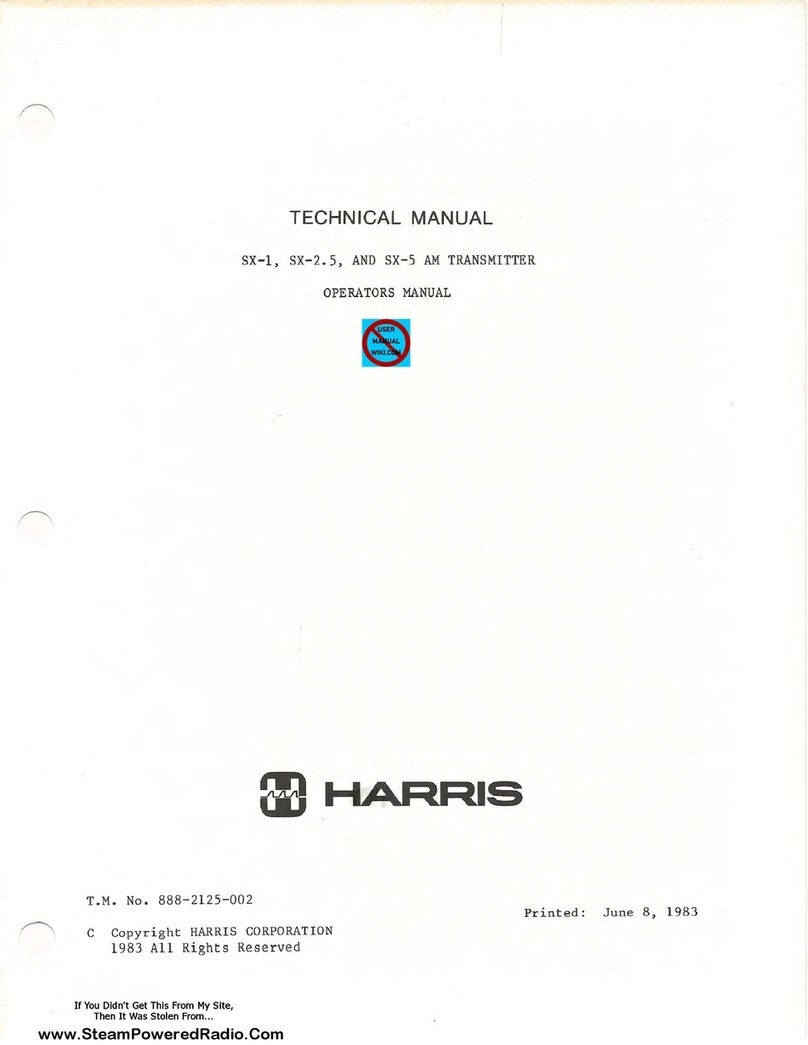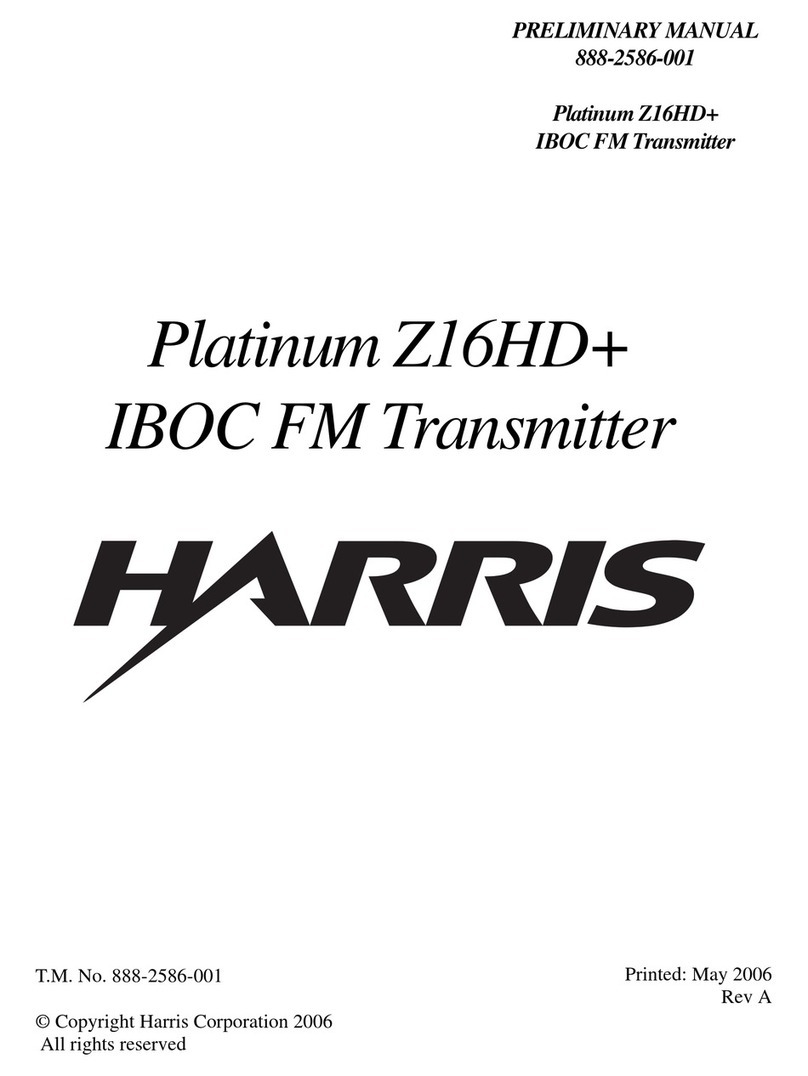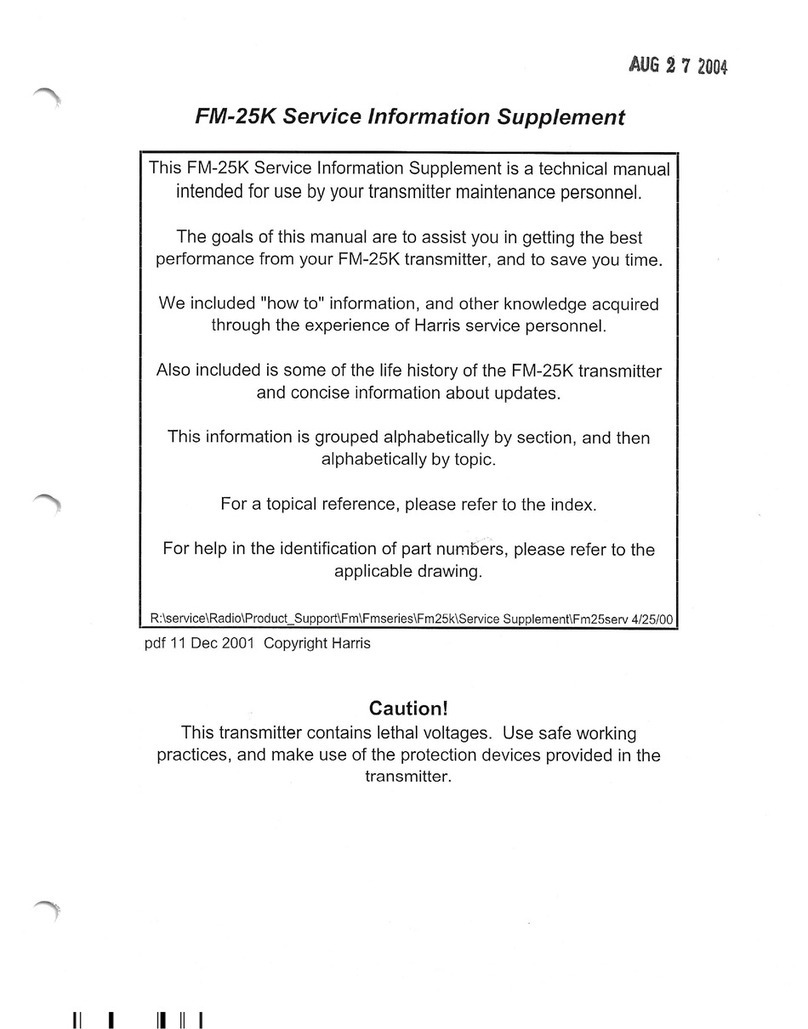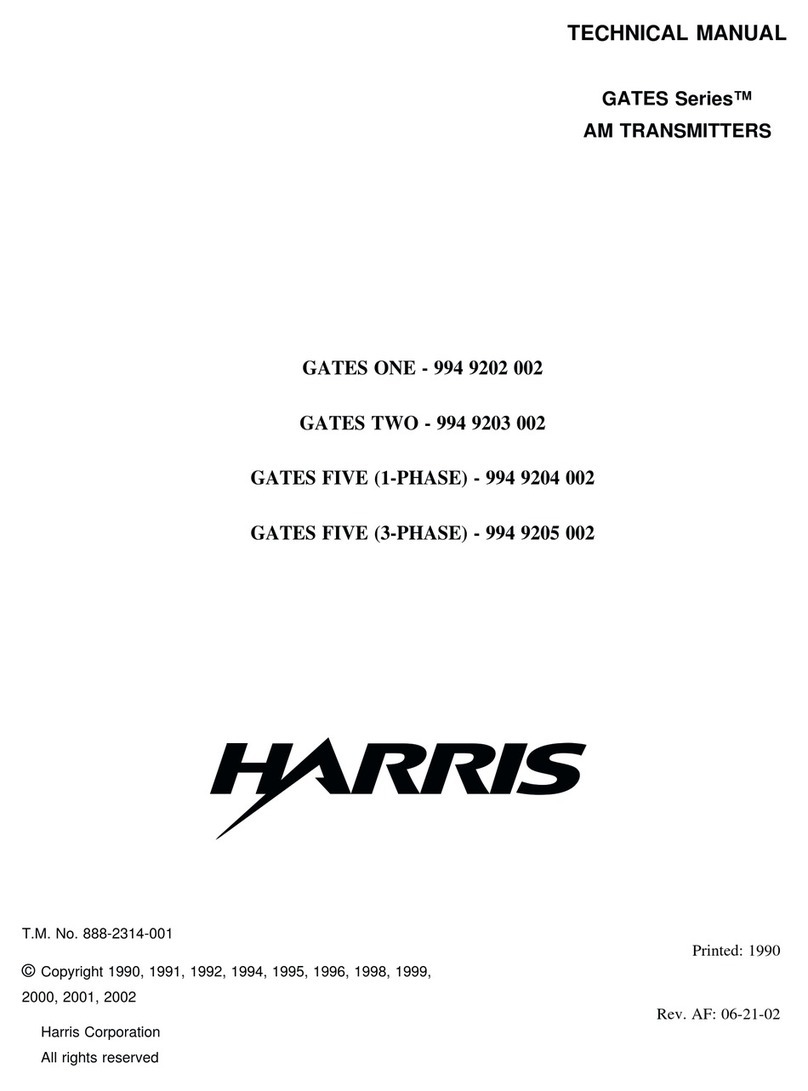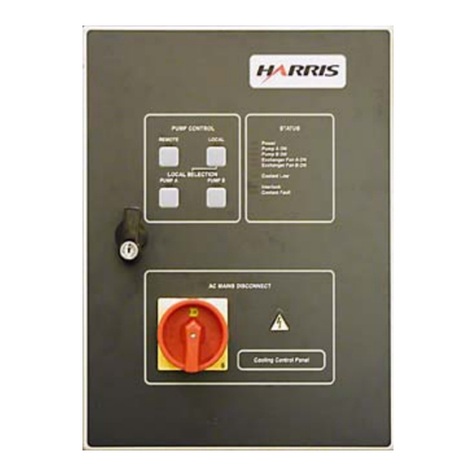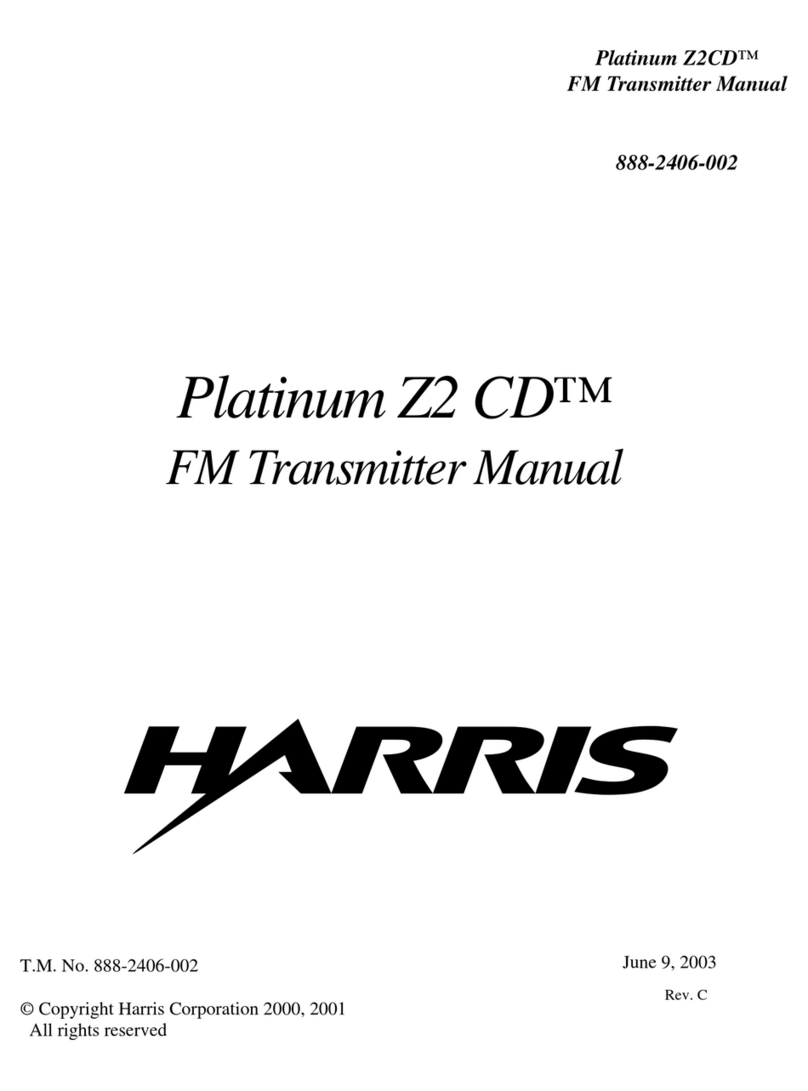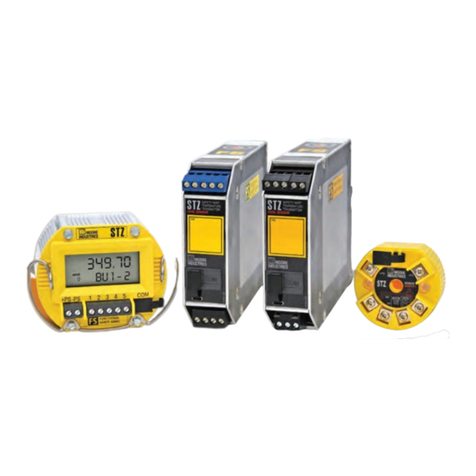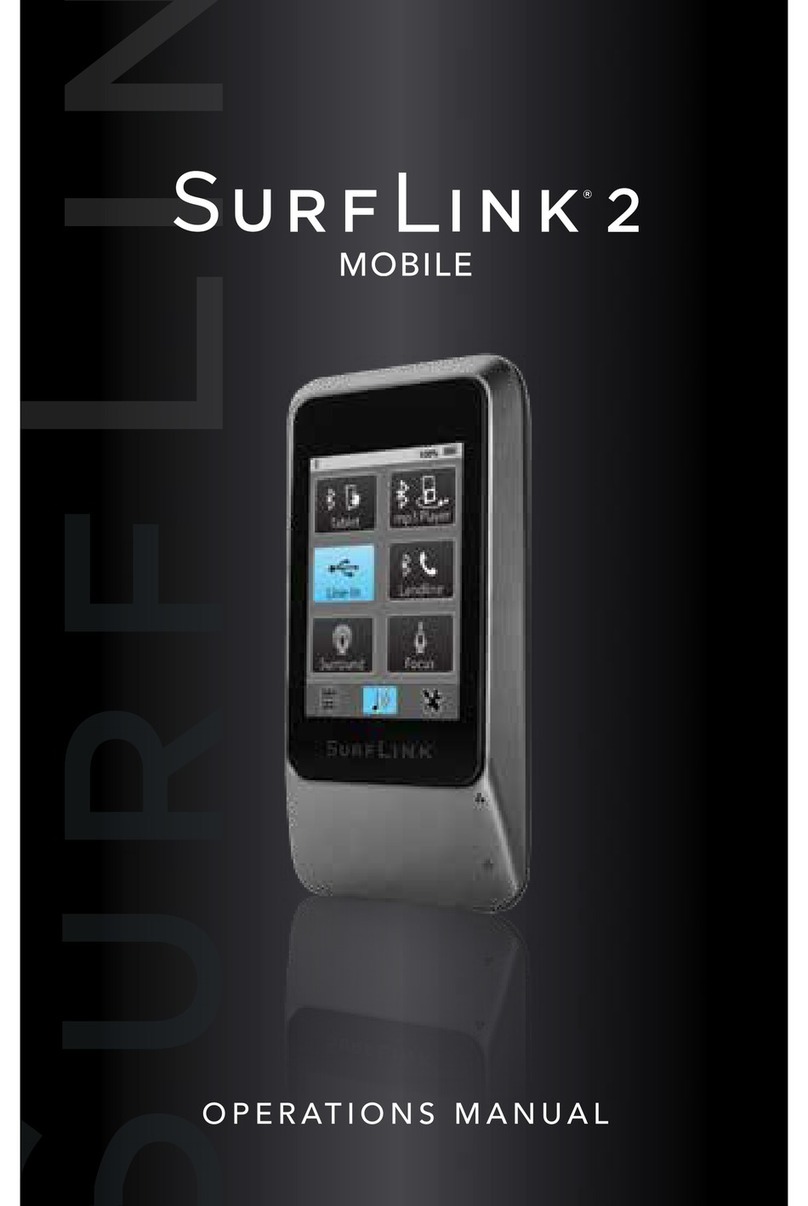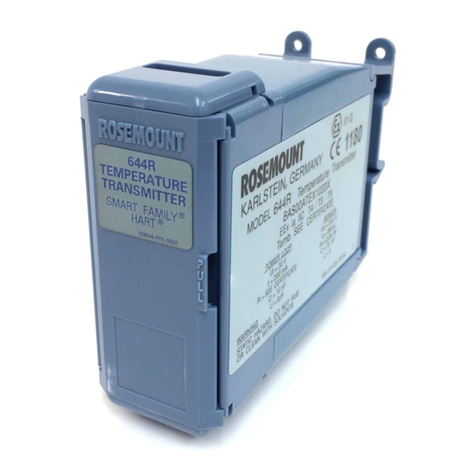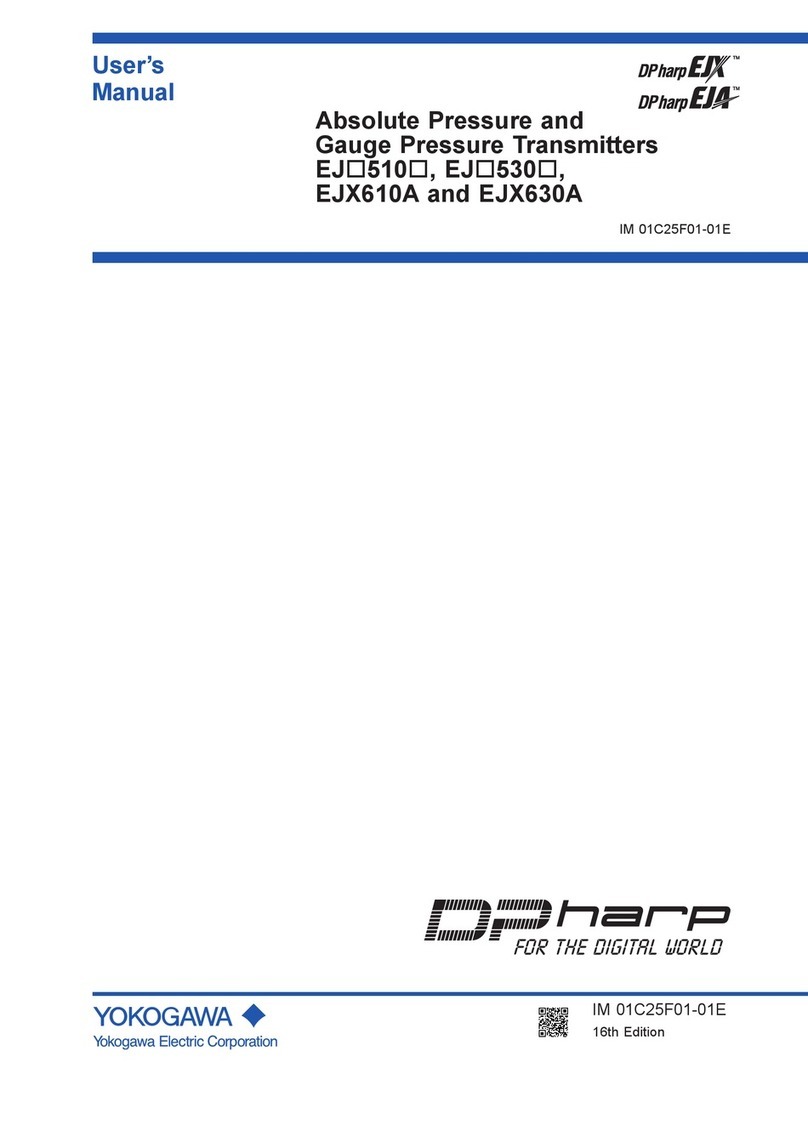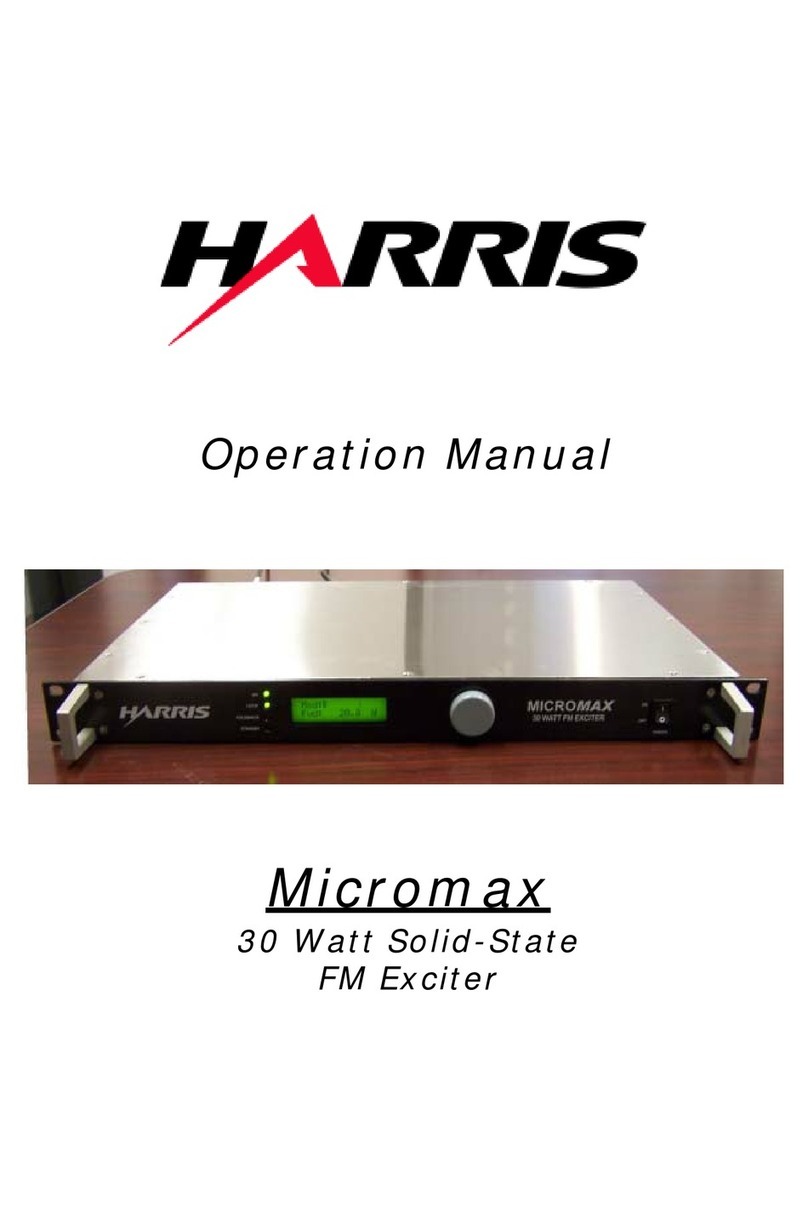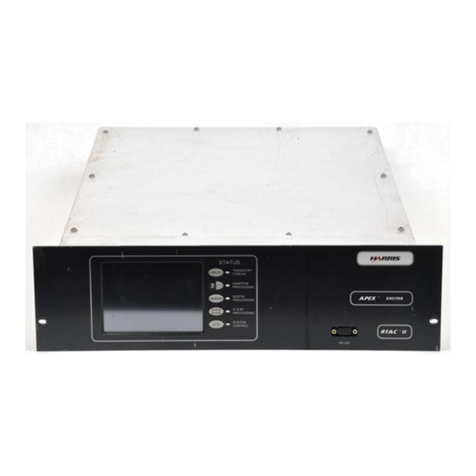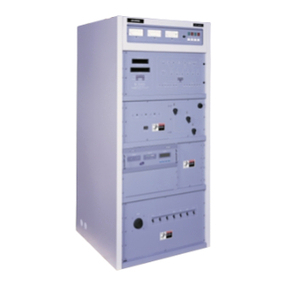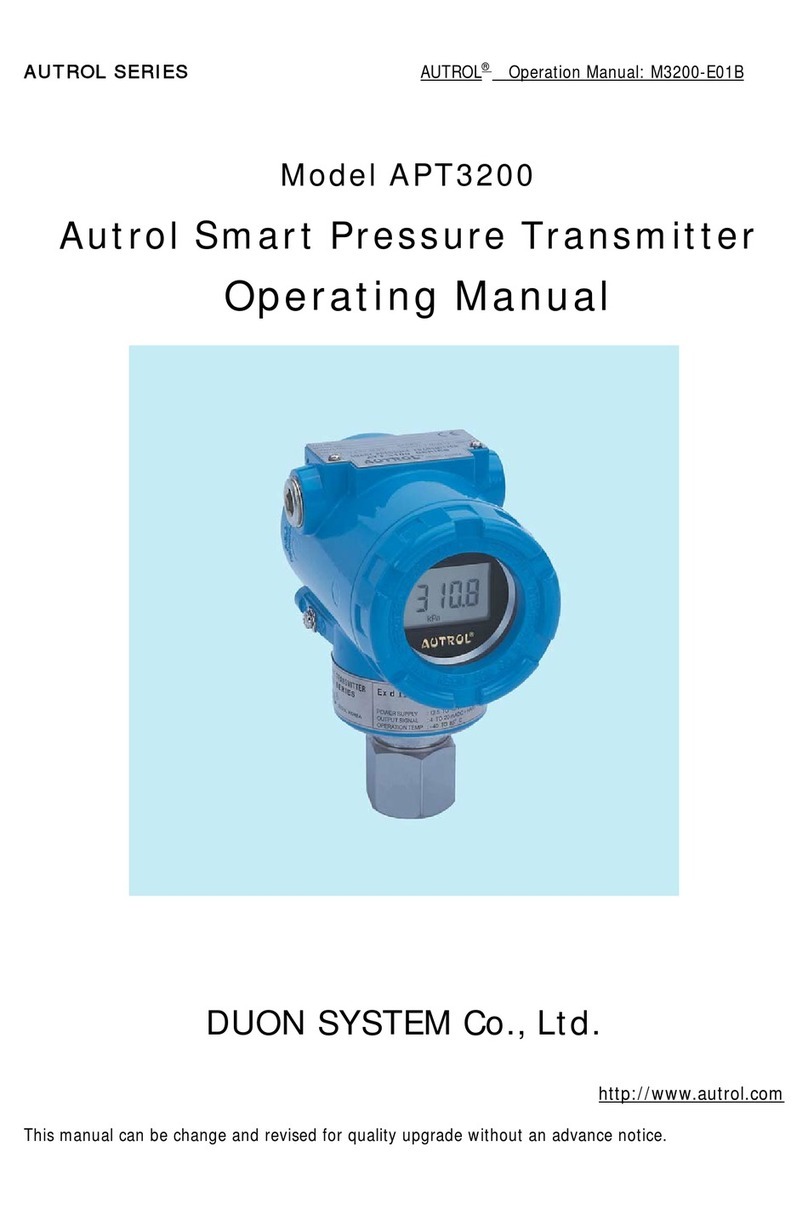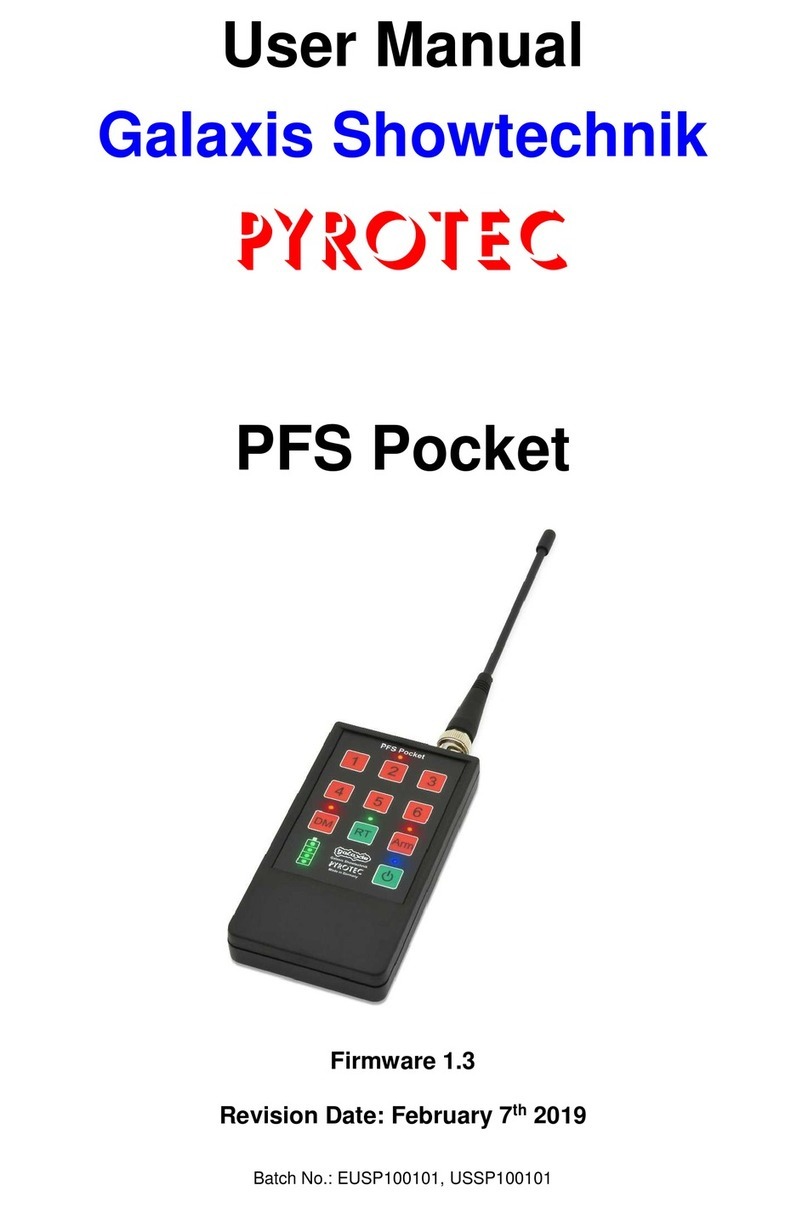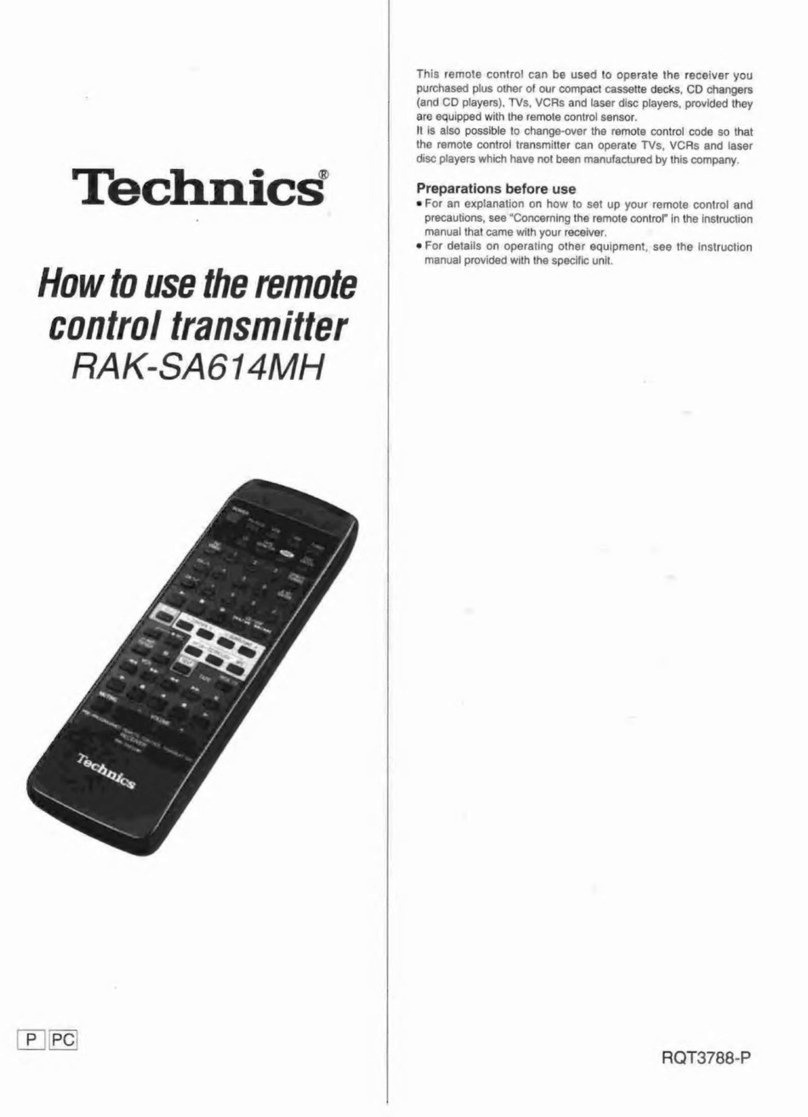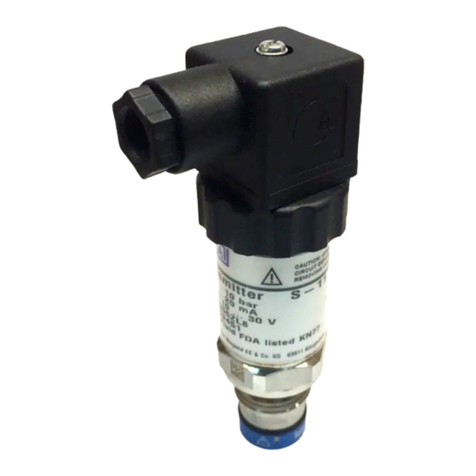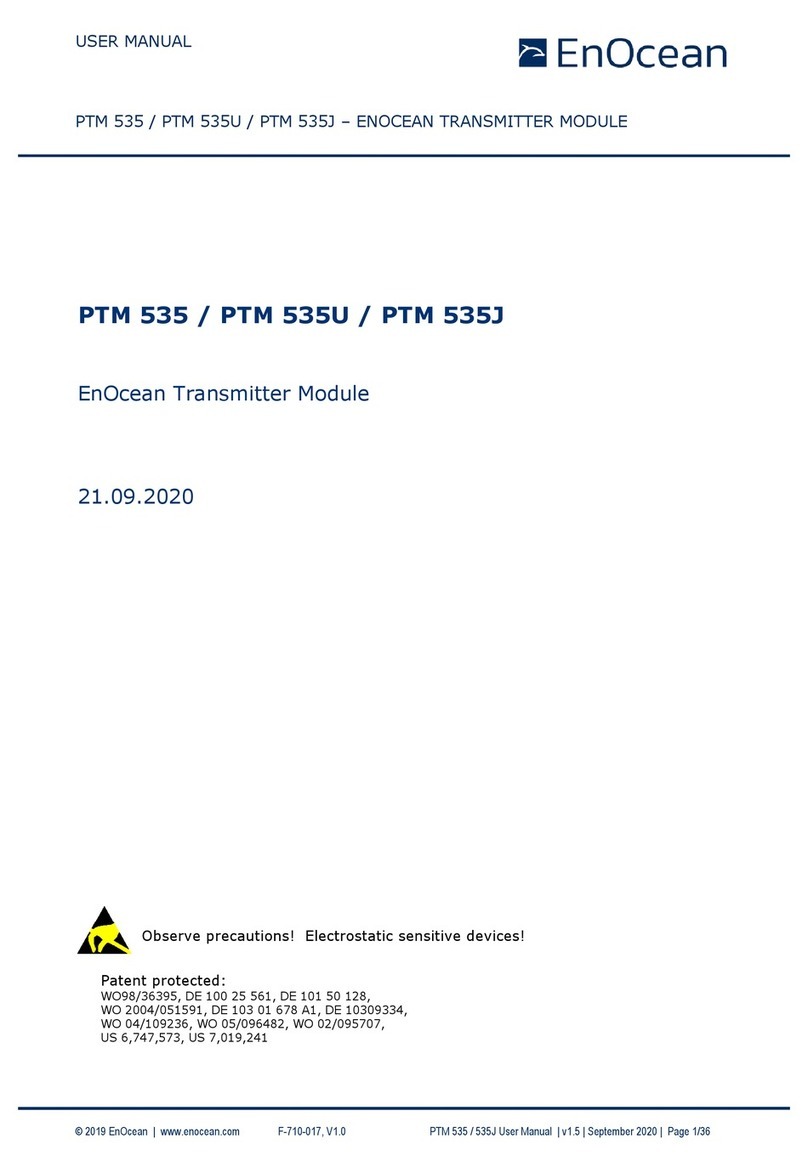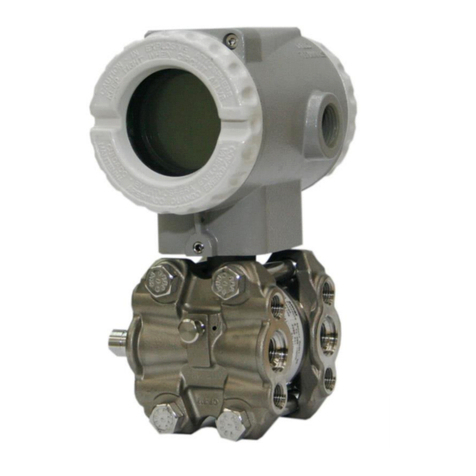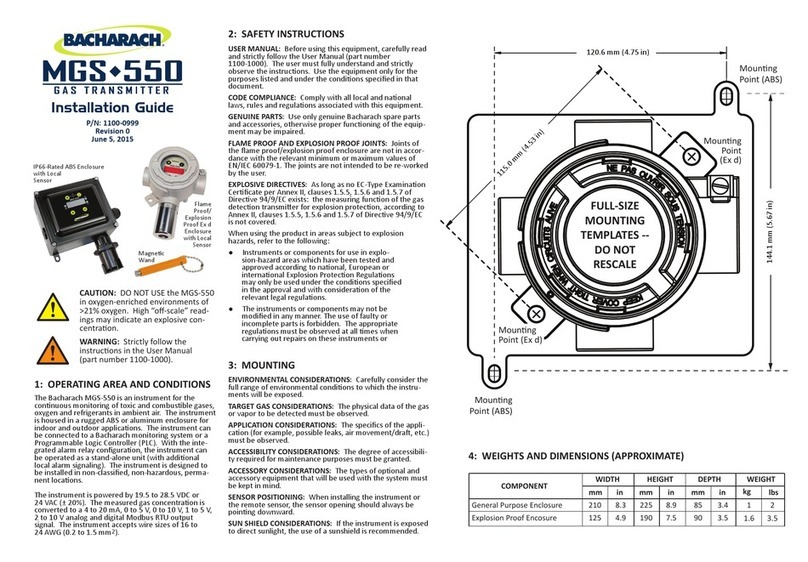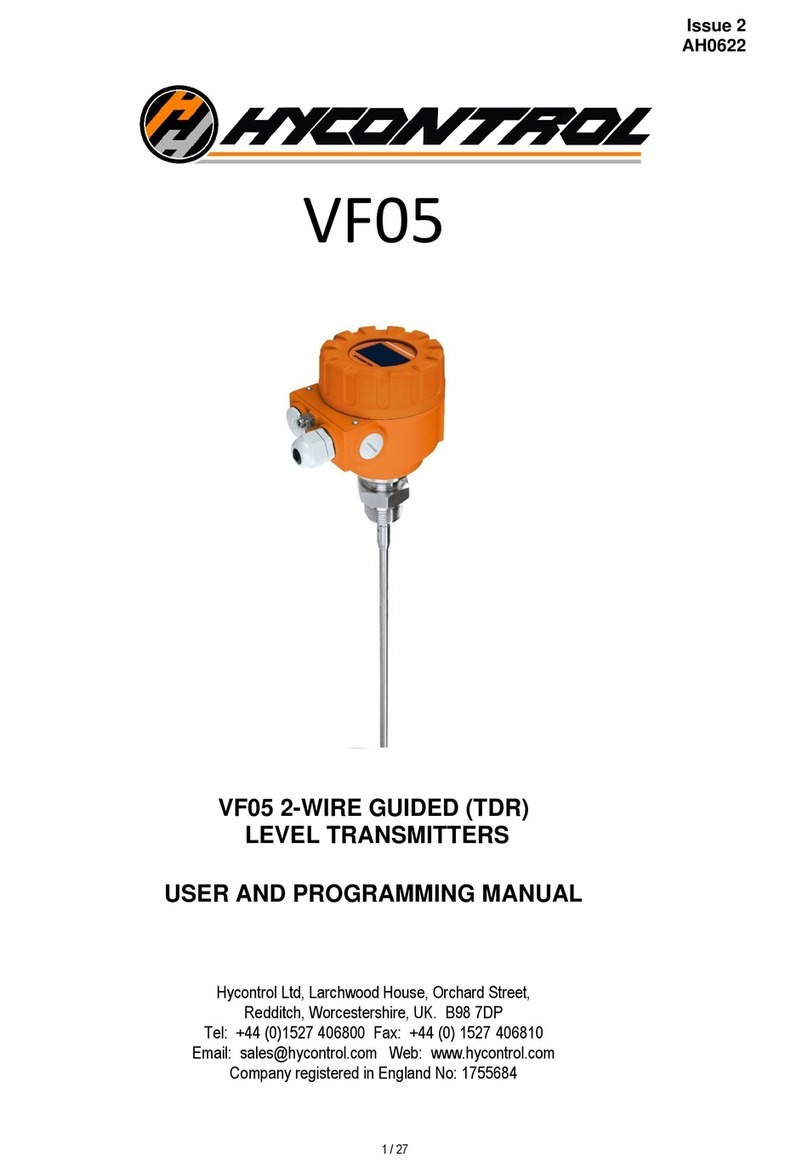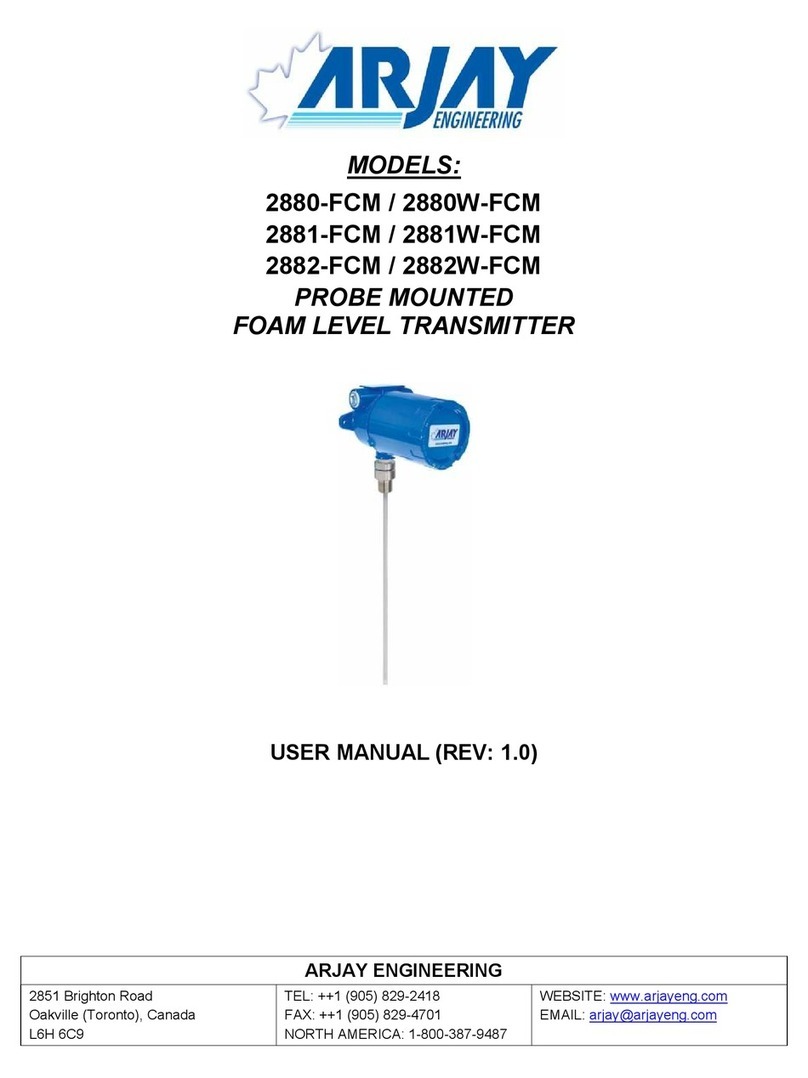
www.SteamPoweredRadio.Com
Guide
to
Using Harris Parts List Information
Toe Harris Replaceable Parts List Index portrays a tree structure with the major items being leftmost
in
the index.
Toe example below shows the Transmitter
as
the highest item
in
the tree structure.
If
you were
to
look
at
the bill
of
.materials table for the Transmitter you would find the Control Cabinet, the
PA
Cabinet, and the Output Cabinet.
In
---J:he
Replaceable Parts List Index the Control Cabinet,
PA
Cabinet, and Output Cabinet show up one indentation level
below the Transmitter and implies that they are used
in
the Transmitter. Toe Controller Board is indented one level
below the Control Cabinet
so
it
will show up in the bill
of
material for the Control Cabinet.
Toe
tree structure
of
this
same index is shown to the right
of
the table and shows indentation level versus tree structure level.
Example
of
Replaceable Parts List Index and equivalent tree structure:
Table
7-1.
Table
7-2.
Table
7-3.
Table
7-4.
Table
7-5.
Table
7-6.
Table
7-7.
Reolaceable Ports
List
Index
Transmitter
994
9283
001
Control Cabinet
992
9244
002
Controller Boord
992
8344
002
PA
Cabinet
992
9400
002
PA
Amplifier
994
7894
002
PA
Amplifier Boord
992
7904
002
Output Cabinet
992
9450
001
7-2
I Transmitter I
994
9283
001 I
7-3
IControl CabinetI \
PA
Cabinet I \Output Cabinet
7-6
992
9244
0021
992
9400
0021
992
9450
001
7-7
⇒
T
7-9
\Controller Board! I
PA
Amplifier I
7-10
992
8344
002
I
994
7894
0021
7-12
I
PA
Amplifier Board!
992
7904
002
I
Toe part number
of
the
item is shown to the right
of
the description
as
is the page
in
the manual where the bill for
that part number starts.
Inside the actual tables, four main headings are used:
Table#-#.
ITEM
NAME -HARRIS PART NUMBER -this line gives the information that corresponds to the
Replaceable Parts List Index entry;
HARRIS
PIN
column gives the ten digit Harris partnumber (usually
in
ascending order);
DESCRIPTION column gives a 25 character or less description
of
the part number;
REF. SYMBOLS/EXPLANATIONS column
1)
gives the reference designators for the item (i.e.,
COO!,
R102,
etc.) that corresponds to the number found in the schematics
(COOi
in a bill
of
material is equivalent to
Cl
on
the
schematic)
or
2) gives added information or further explanation (i.e., "Used for 208V operation only," or "Used
for
HT
lOLS only," etc.).
Inside the individual tables some standard conventions are used:
A#
symbol
in
front
of
a component such
as
#COOi
under the REF. SYMBOLS/EXPLANATIONS column means
that this item is used on or with
COOi
and is not the actual part number for
COOL
In the ten digit part numbers,
if
the last three numbers are 000, the item is a part that Harris has purchased and
has
not
manufactured or modified.
If
the last three numbers are other than 000, the item is either manufactured by
Harris or is purchased from a vendor and modified for use
in
the Harris product.
Toe first three digits
of
the ten digit part number tell which family the part number belongs to -for example, all
electrolytic (can) capacitors will
be
in the same family
(52±
xxxx 000).
If
an electrolytic (can) capacitor is found
to have a 9xx xxxx xxx part number
(a
number outside
of
the normal family
of
numbers), it has probably been
modified
in
some manner at the Harris factory and will therefore show up farther down into the individual parts
list (because each table is normally sorted in ascending order). Most Harris made or modified assemblies will
have 9xx xxxx xxx numbers associated with them.
Toe term
"SEE
HIGHER LEVEL BILL" in the description column implies that the reference designated part
number will show up in a bill that is higher
in
the tree structure. This is often the case for components that may
be frequency determinant or voltage determinant and are called out in a higher level bill structure that is more
customer dependent than the bill at a lower level.
2-02-93



















